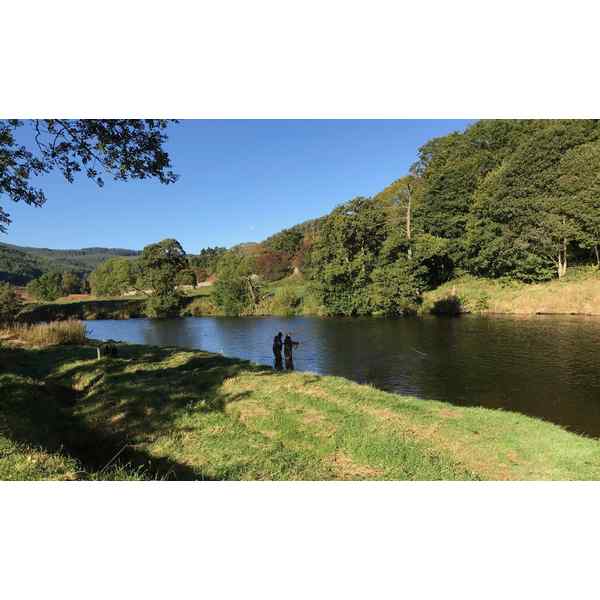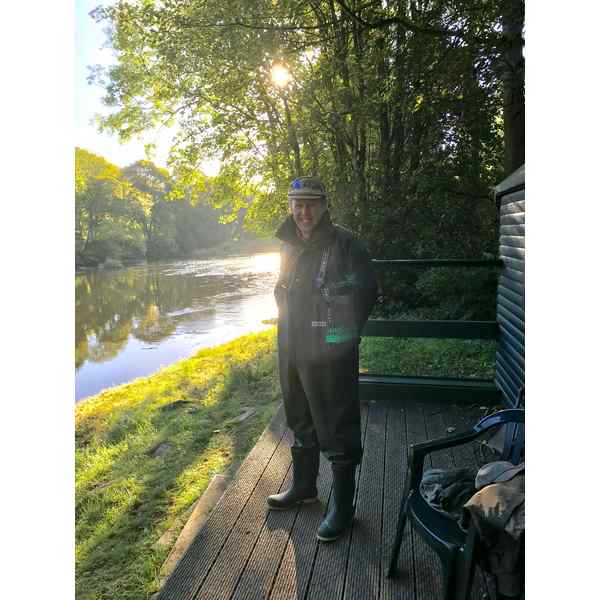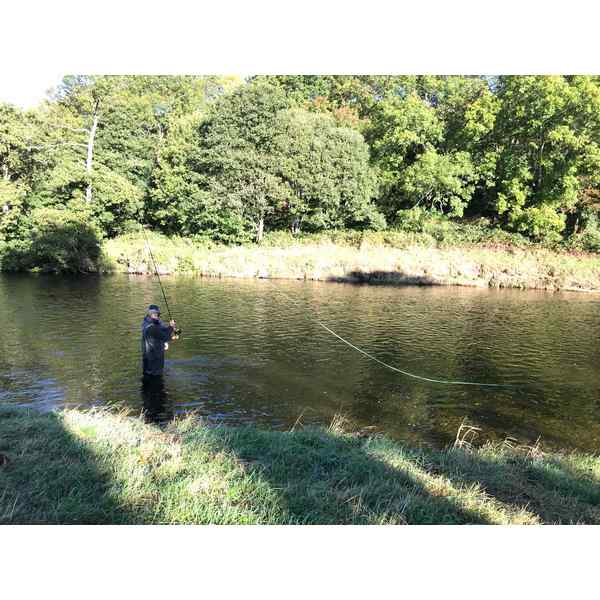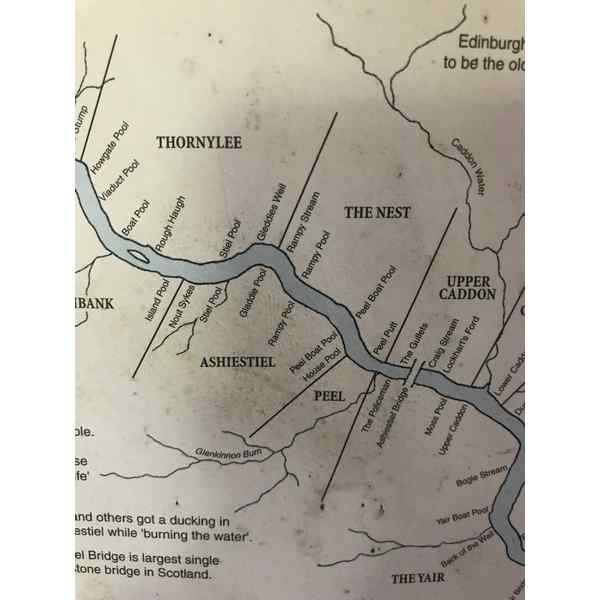Gone Fishing....
Fishing is a country pursuit that I have always wanted to try, but never until recently
managed to find the time to give it a go. For my birthday this year my
girlfriend Emily bought me a half-day salmon fishing on the Tweed, this gave me
the perfect opportunity to try the sport.
Living not far from the river Coquet, which is a well-known
local river for brown trout, sea trout and salmon, I have often heard friends
talking of successful afternoons fishing. This is something I had always had on
my agenda to try but never got around to giving it a go, it also seemed inaccessible
for a novice to try without buying equipment first.
Earlier this year in June, I was lucky enough to be
given a half-day salmon fishing on the famous Tweed for my birthday. The day was
fully inclusive of all equipment I would need and crucially, having never held
a fishing rod, professional instruction. June is a busy time of the year on the
shooting ground and this year’s harvest was very early on the farm. I decided to book up for September, after the
busy period.

I was also told that later in the year is a prime time
to go salmon fishing because this season there is more water and this is when
they start to run, making it more likely to catch. Wild Salmon (Salmo Salar) hatch
in the river in spring, they remain in the river for about three years when they
swim out to sea. The salmon live out in the sea for up to four years and travel
great distances to find feeding grounds, before returning to the river of birth
to reproduce. One myth that I thought was true with salmon fishing is that you
are trying to tempt the fish with bait to eat, but once the salmon have return
into the river they do not feed. No-one exactly knows what attracts the fish to
the fly on the end of the line, some say it could be the salmon being
inquisitive or annoyed by the fly.
The sunny September morning came and we packed the car
with the usual provisions you would expect to take on a day’s game shooting; lunch
being the most important. The journey up took about 1 1/2 hours, although it is
a picturesque drive up the A697 then across over to Galashields. I met my
instructor and gillie Dave, in an easy to find pub car park and then followed
him a few miles to the Ashiestiel Estate.
The Ashiestiel estate is an 863-acre country estate with
1 ¾ miles of fishing on the Tweed. The estate is known for once being home to
the famous Scottish novelist Sir Walter Scott, from 1804 to 1812, before he
moved a short distance down river to Abbotsford.
Once at the fishing bothy on the banks of the river Dave
kitted me out with waders, it was quite a fresh morning so I decided to wrap up
with a Harkila under layer and my Schoffel lightweight Ketton jacket. Eye and
head protection are also a must for fly fishing with dangerous hooks flying
through the air, this was also provided by tweed guide.
Dave ran through the basics on the bankside on how to
hold the double handed 15 foot fly rod, then suggested we wade out into the
river and he would demonstrate the Spey cast technique. We waded out to a depth
of 18-24” and immediately I quickly realised how cold the water was and now I
suggest warm socks for fly fishing! The footing was also something I had previously
not thought of. It was quite difficult to walk in the albeit slow current with
the round rocks difficult to judge as you make your way out, and I was conscious
of falling face first in the icy cold water!

Like all pro’s, Dave took his time to demonstrate the
spay cast, he made it look effortless with a certain accuracy and landed the
fly exactly where he wanted it. The fly rod is long and flexible, with a reel
attached holding a weighted floating line, on the end is a small light hand
tied fly with a small hook. When it came to my turn Dave was very patience and
showed me exactly how to stand, hold the rod and cast the line across the
river. He also gave me an etiquette lesson on fishing, on thing I did not realise
is that after every cast it’s good manners to take a step or two downstream,
this is because you are fishing a stretch of the river and other fishermen will
often be following you down a certain pool, once you get to the end of the pool
you then climb out and walk back along the bank to where you started.
I picked up the basics and started fishing and stepping
down steam with every cast, Dave retired to the bank and left me to it with the
occasional pointer on my technique. Fish were jumping all around my fly and I
felt as though they were simply teasing me as I continued to fish with no
success, I even seen a huge silvery salmon jump from the water 5 foot from my
fly. Emily meanwhile had found a sunny spot on the bank where she sat with a
coffee intermittently reading between giving a rather infuriating commentary of
all the fish that kept on jumping all around me! After getting to grips with
the Spey cast, Dave returned to the river to show me another cast: The Snake
roll. The Snake roll cast was more difficult but
with persistence I picked it up.

I fished for about two hours straight with no luck,
until I thought I had snagged my hook on a leaf. To my surprise the leaf turned
out to be a salmon! It was true it was a salmon but only a Parr, being a 2-3 year-old
fish which was yet to go out into the sea. With the help of Dave, I hurriedly
released the tiny creature before Emily could get an embarrassing photo of my minuscule
catch. I fished on for another hour or so, again with the ripples of jumping
fish around me but no luck. After 3 hours of solid fishing I decided to pack up
for lunch and headed back to the fishing bothy for our picnic. There I met a
man on another pool who had caught a fish that morning after three days of
fishing!
I thoroughly enjoyed my morning fishing on the Tweed
and would love to go again, though I do think it’s not just about catching that
elusive fish, the peace and quiet, the thrill of making a great cast across the
river and of course being in the beautiful countryside combines to make great sporting
day out.
For more information on having a go fishing follow the
link to Tweed Guide






